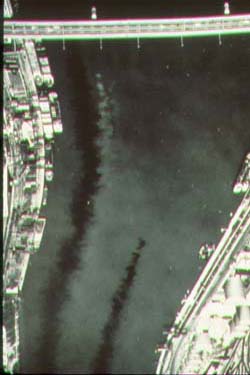In CORMIX analyses, as all mixing zone evaluations, are usually carried out under the assumption of steady-state
ambient conditions.
This includes discharge volume flux and ambient flow field conditions. Even though the actual water environment is never in a true steady-state,
this assumption is usually adequate since mixing processes are quite rapid relative to the time scale of hydrographic variations.
In highly unsteady ambient tidal reversing flows the assumption is no longer valid and significant concentration
build-up can occur. CORMIX will assess this situation and compute some re-entrainment effects on plume behavior.
CORMIX requires that the actual cross-section of the ambient water body be described by a rectangular channel that may be bounded laterally or unbounded. This is essential to capture the effect of boundary interaction on mixing zone behavior.
Furthermore, that channel is assumed to be uniform in the downstream direction, following the mean flow of the actual water body that may be non-uniform or meandering. The process of describing a receiving water body's geometry with a rectangular cross-section is herein called schematization.
Additional aids exist for the CORMIX user for interpreting plume behavior in the far-field of actual non-uniform winding or meandering flows in rivers or estuaries with the post-processor option FFLOCATR.


